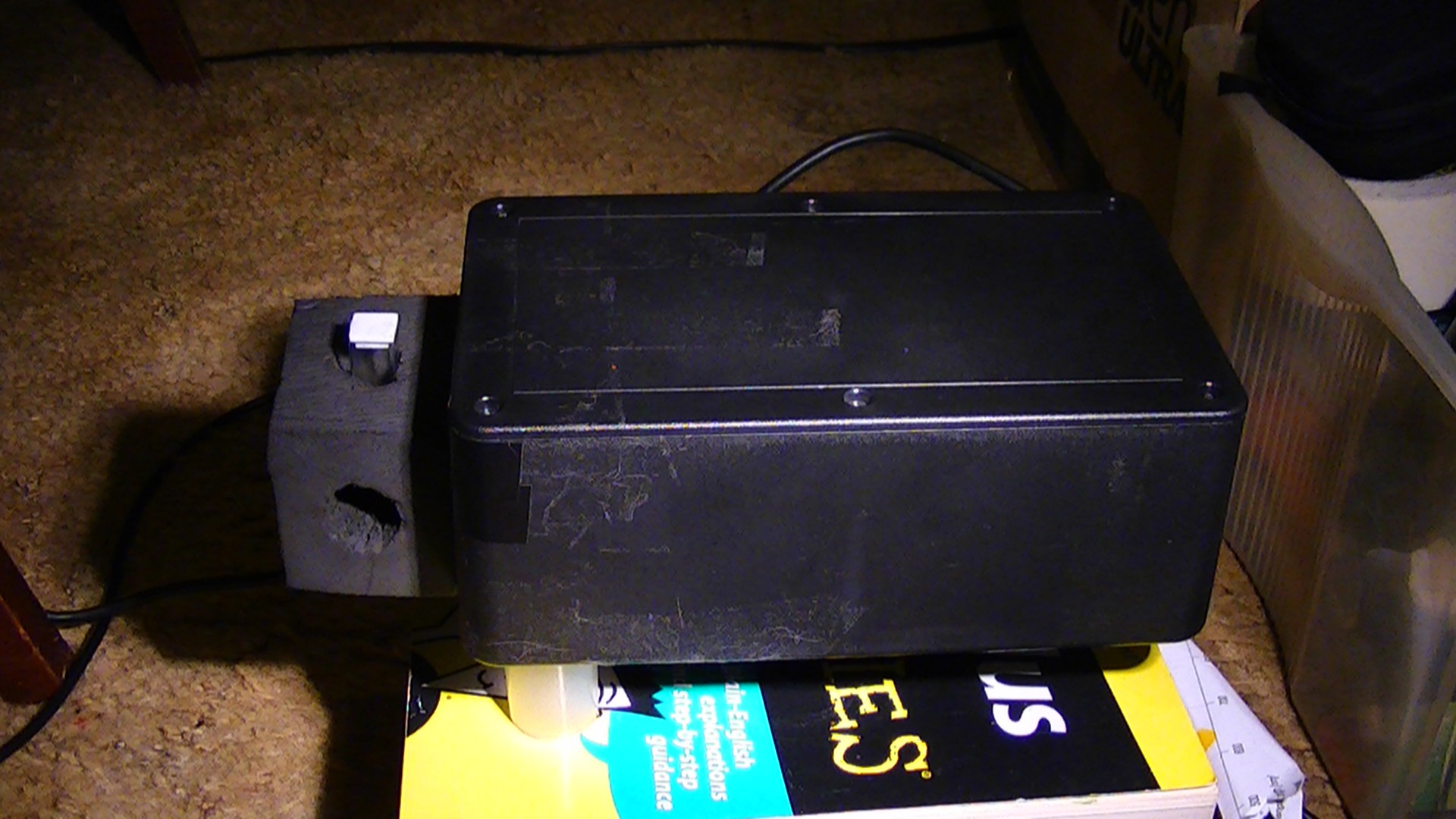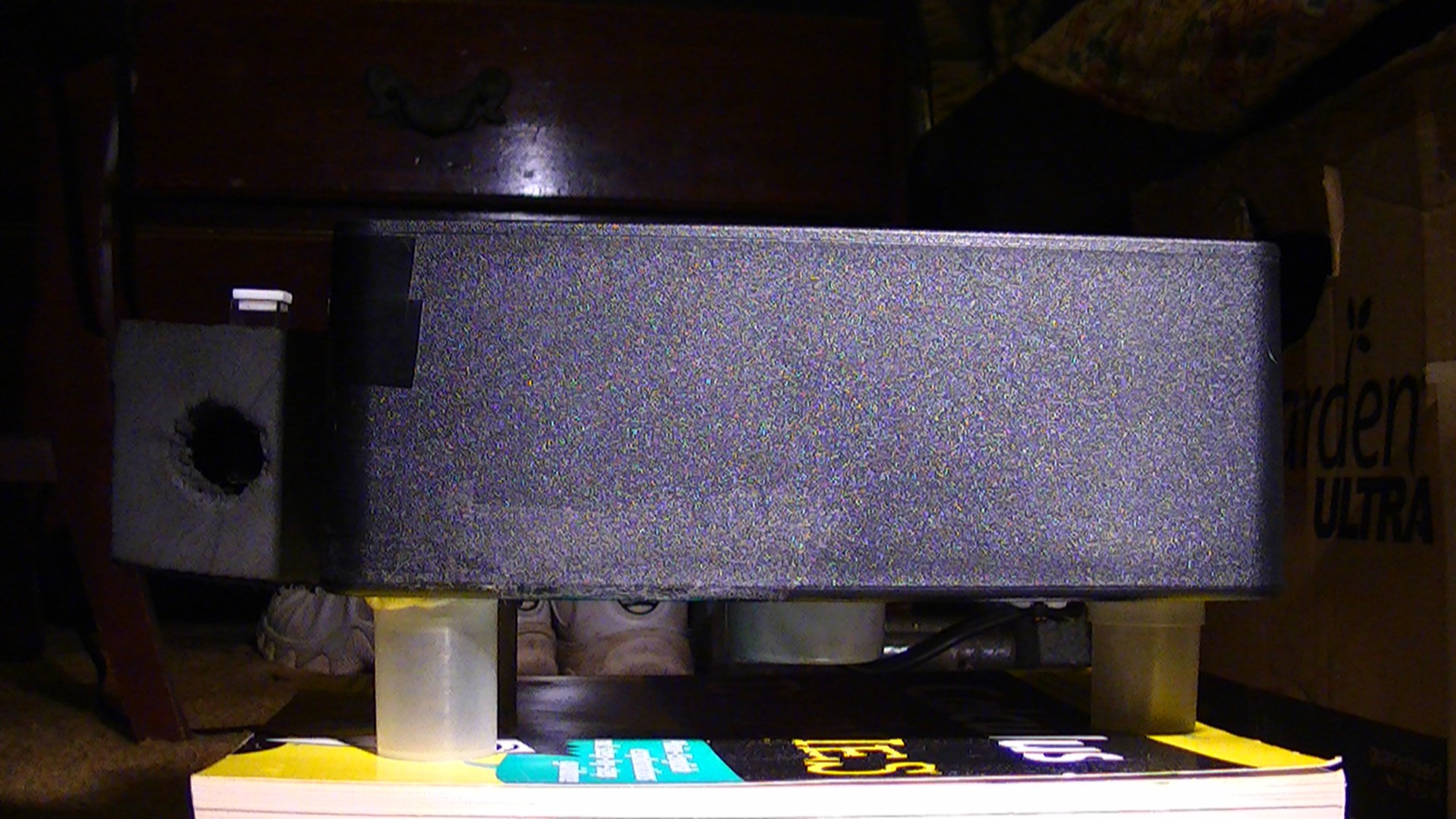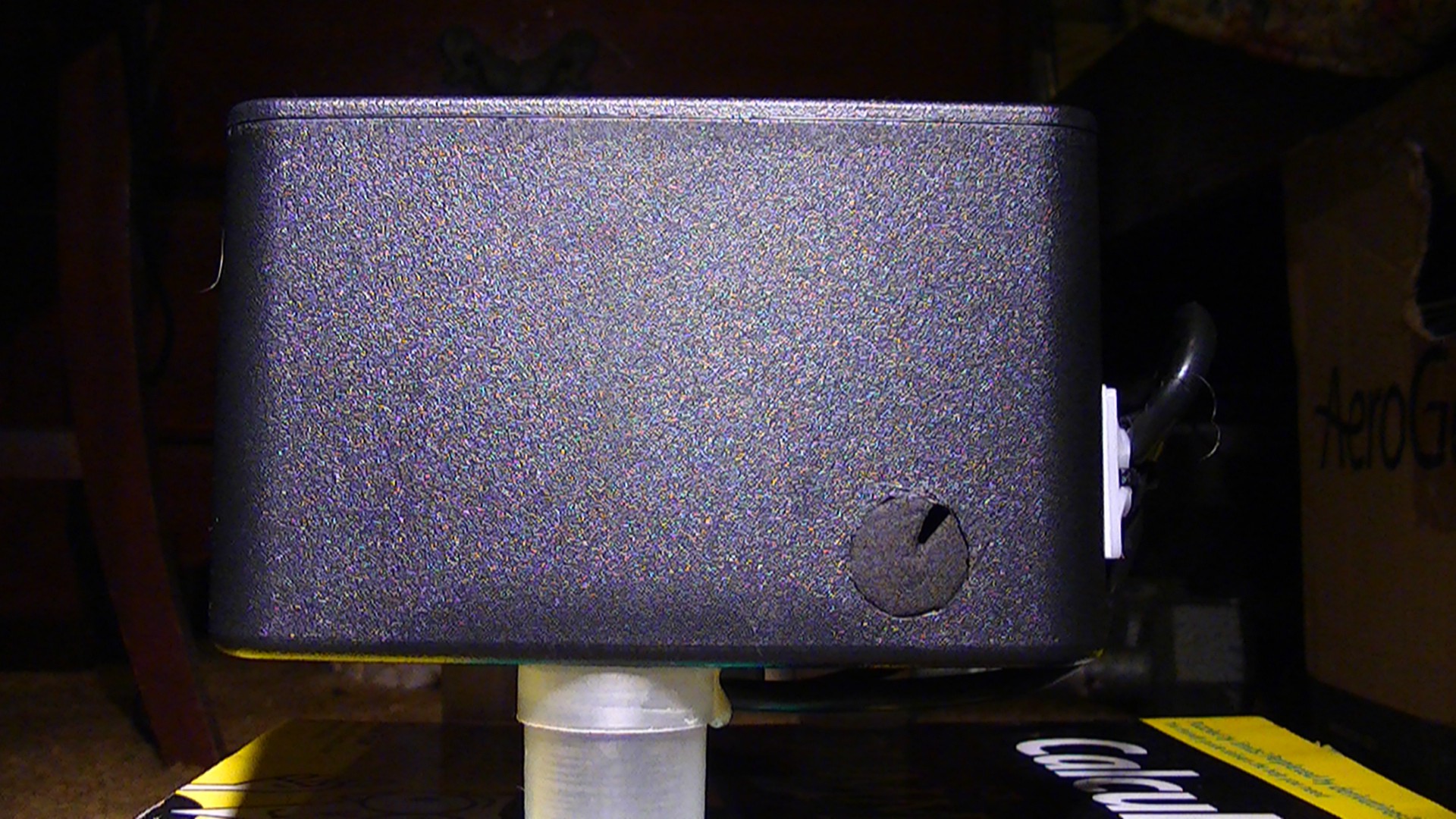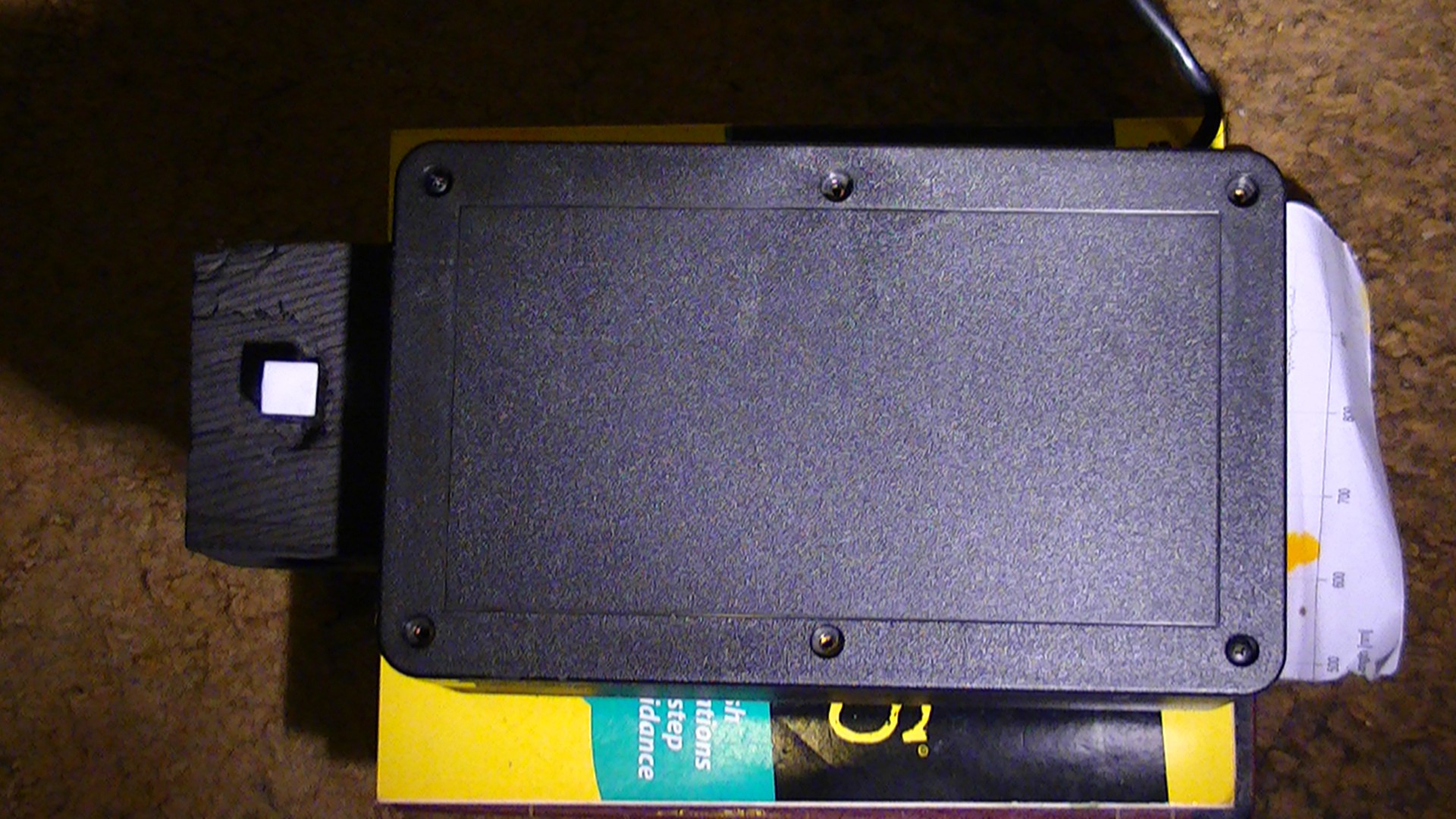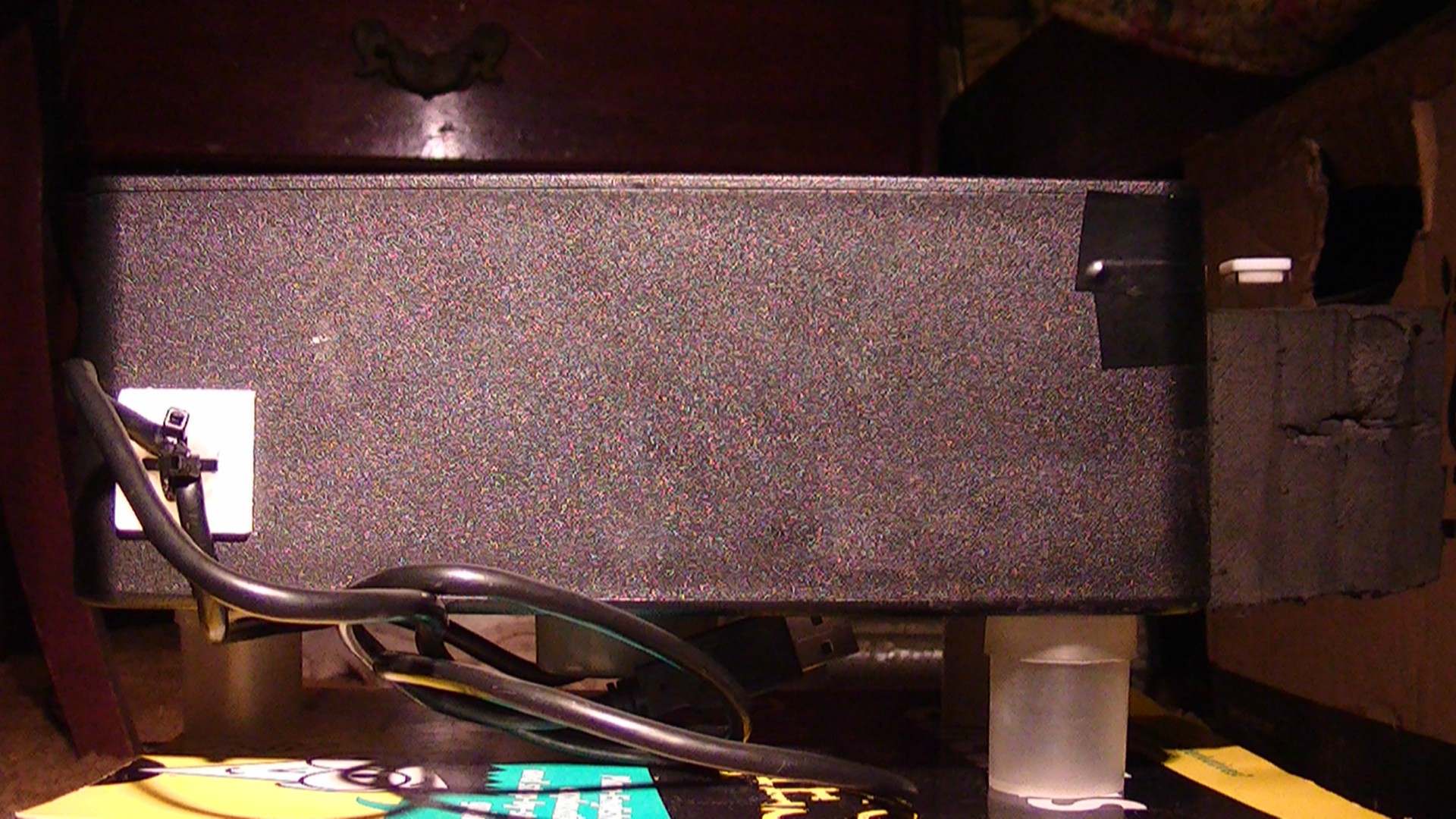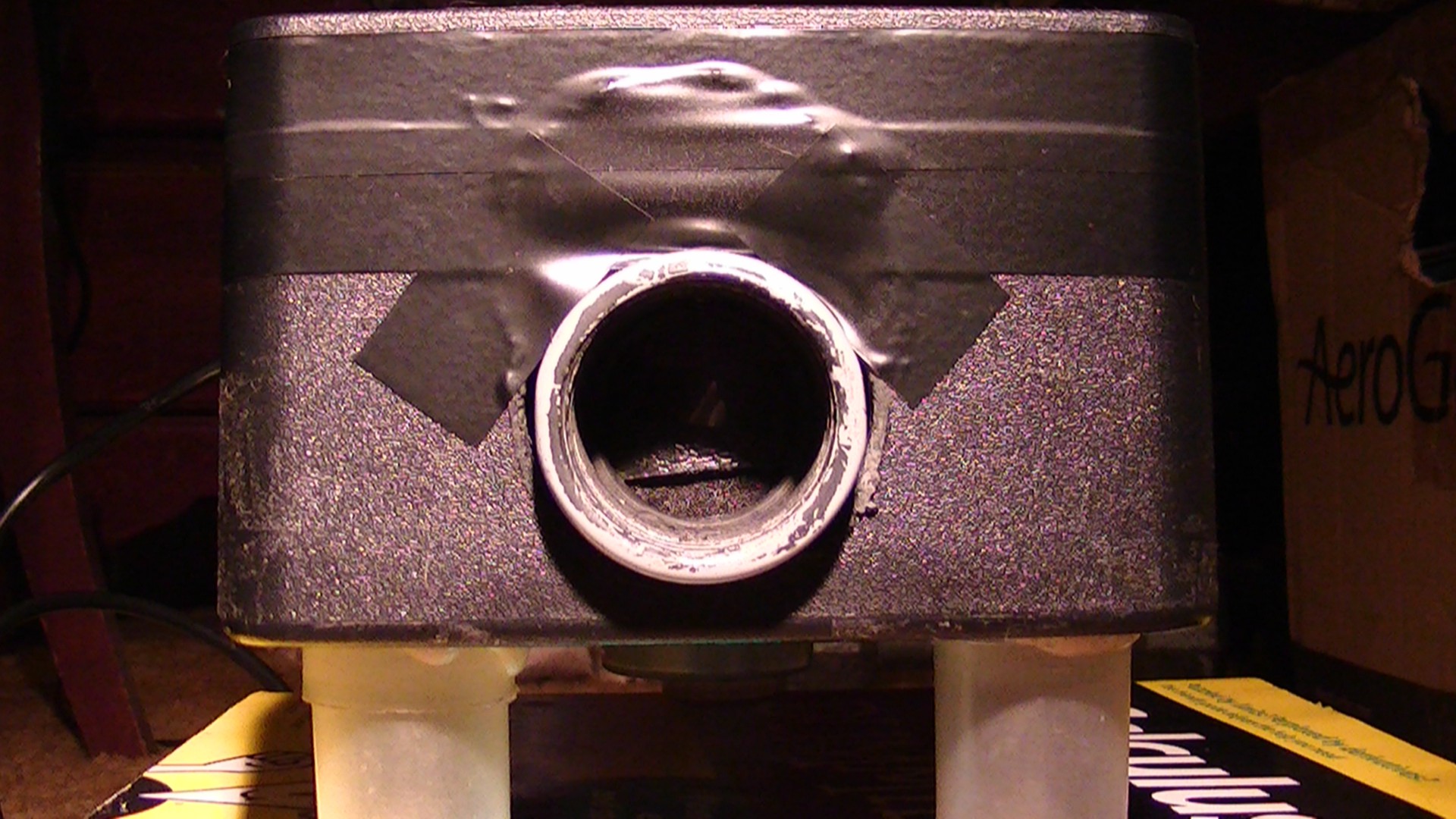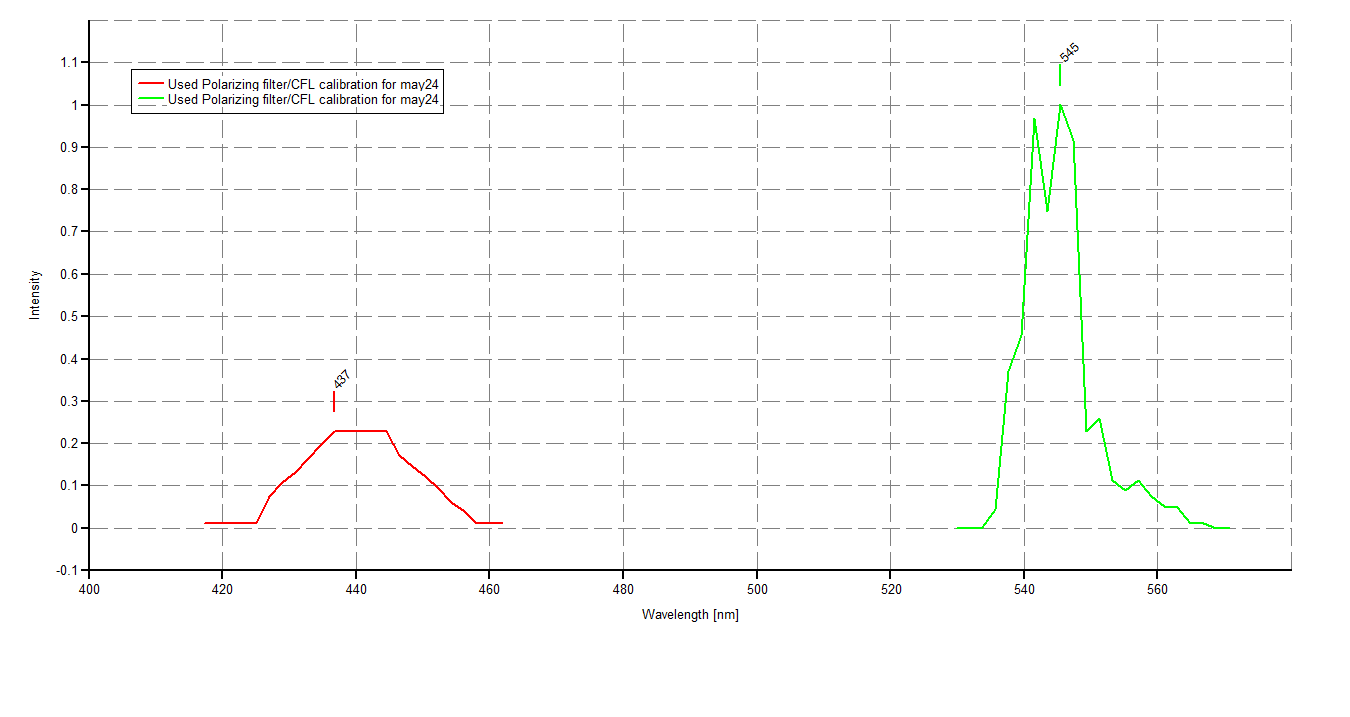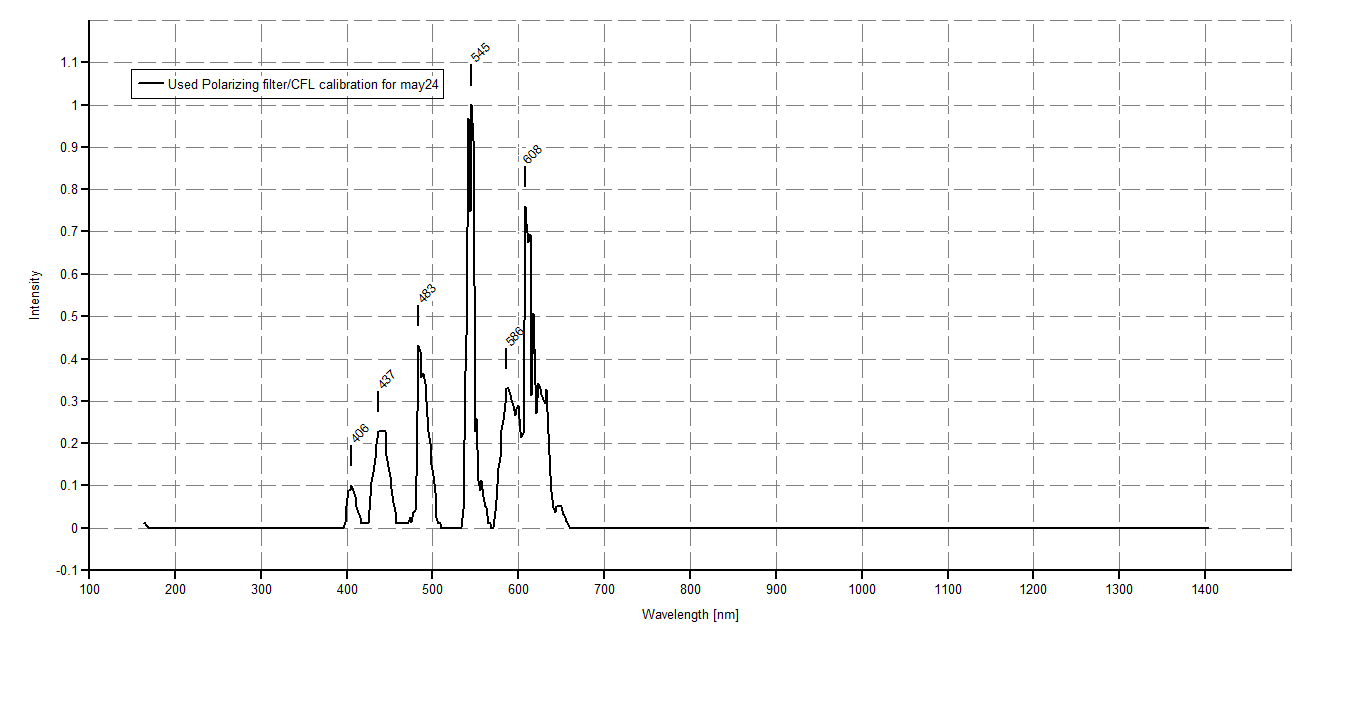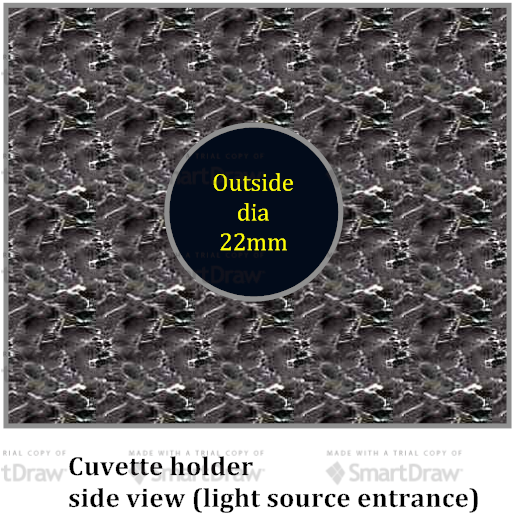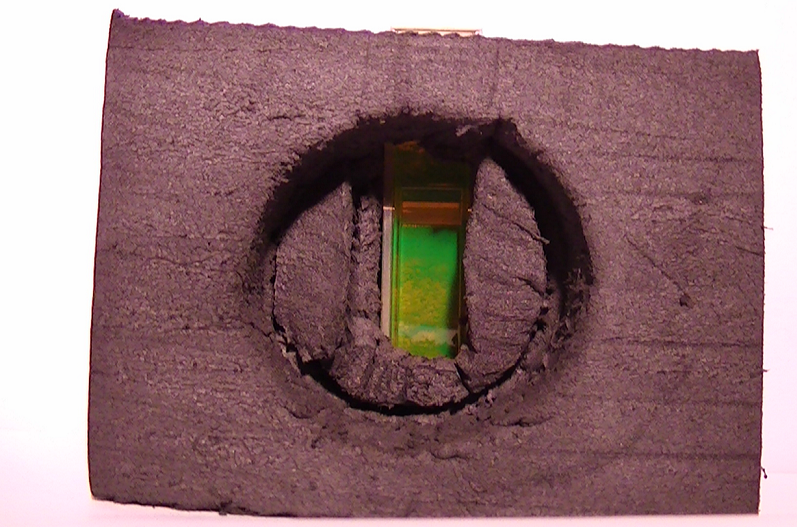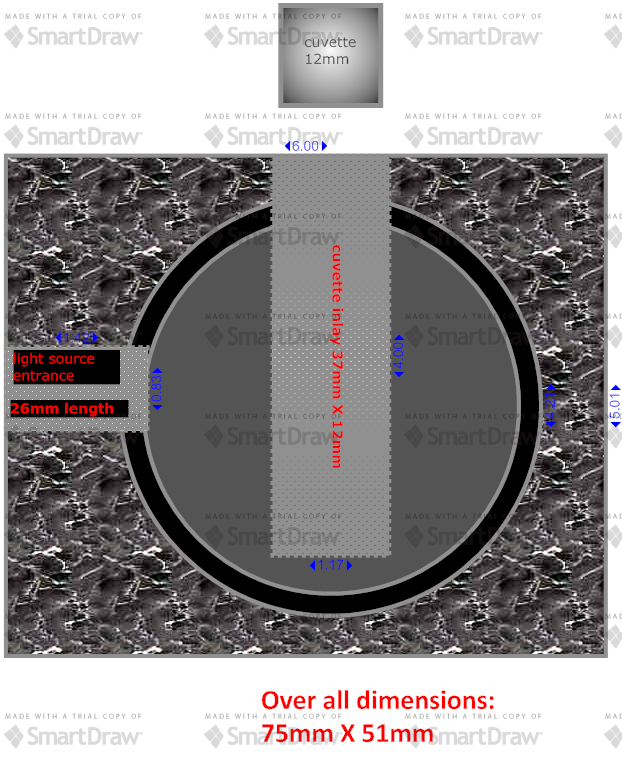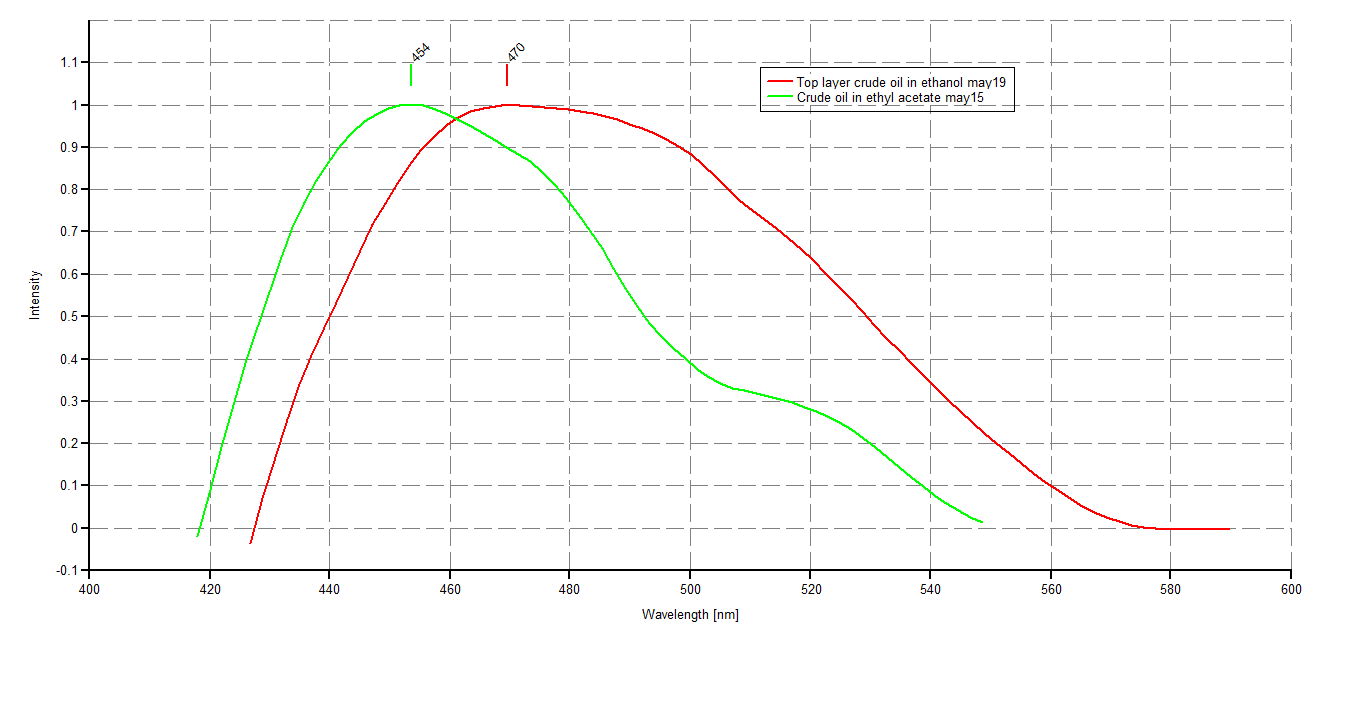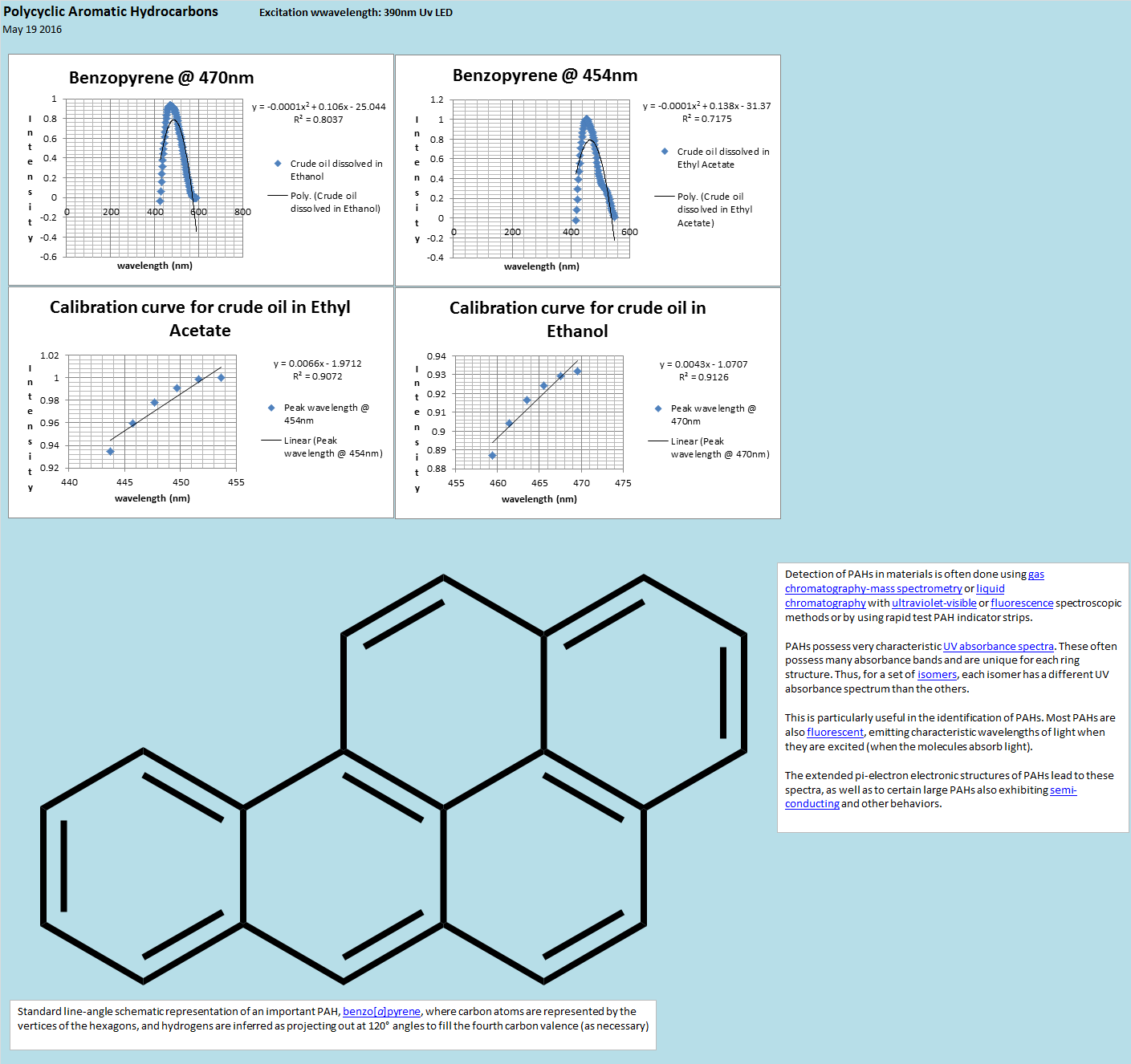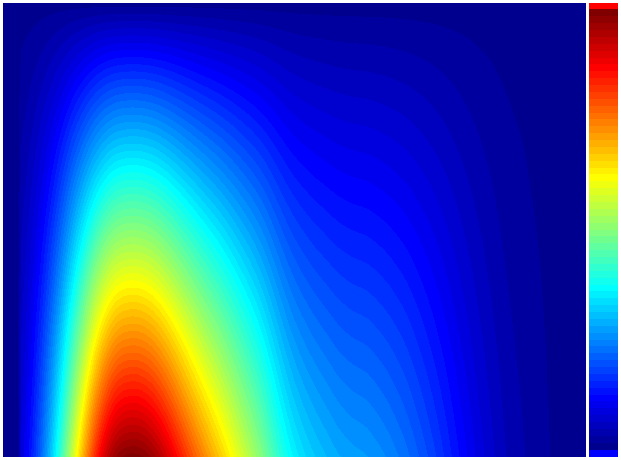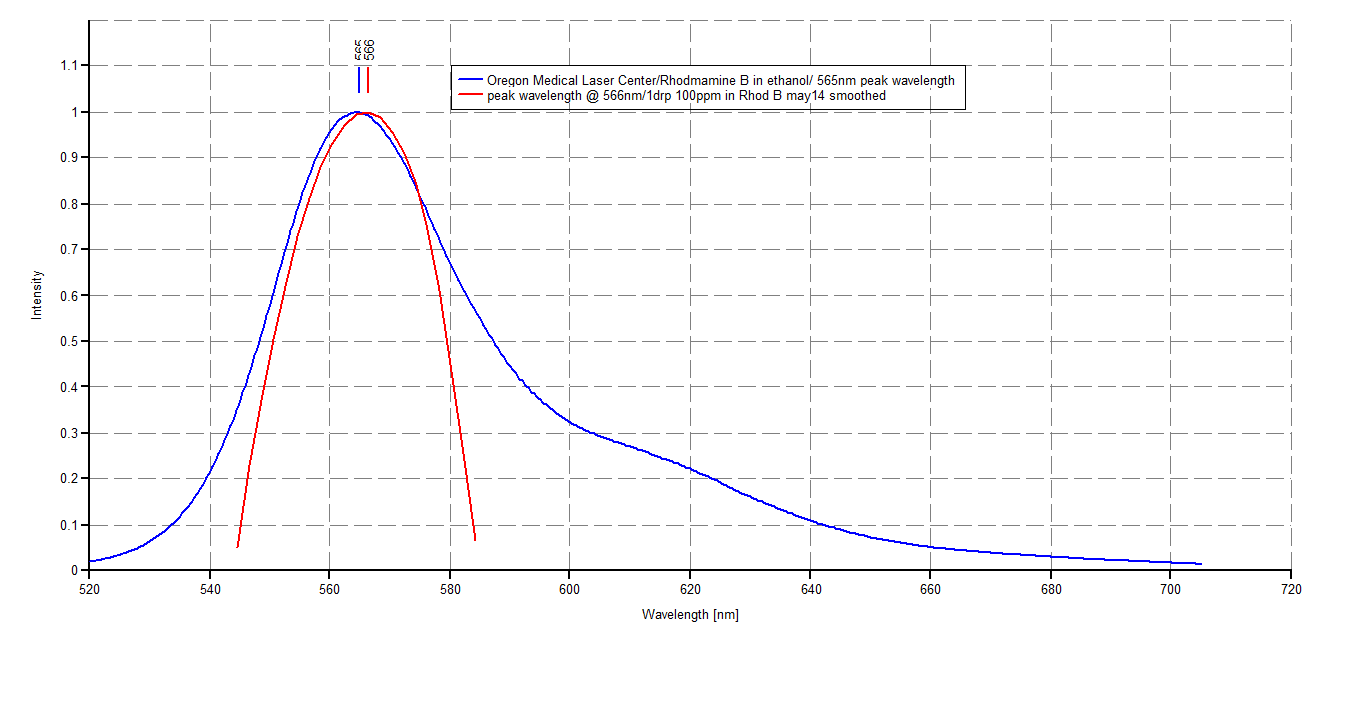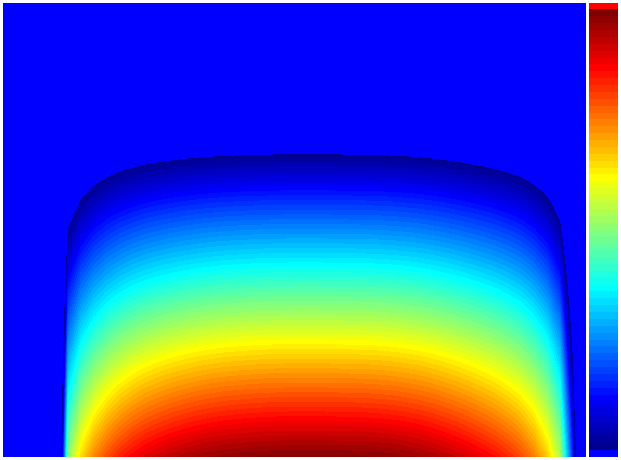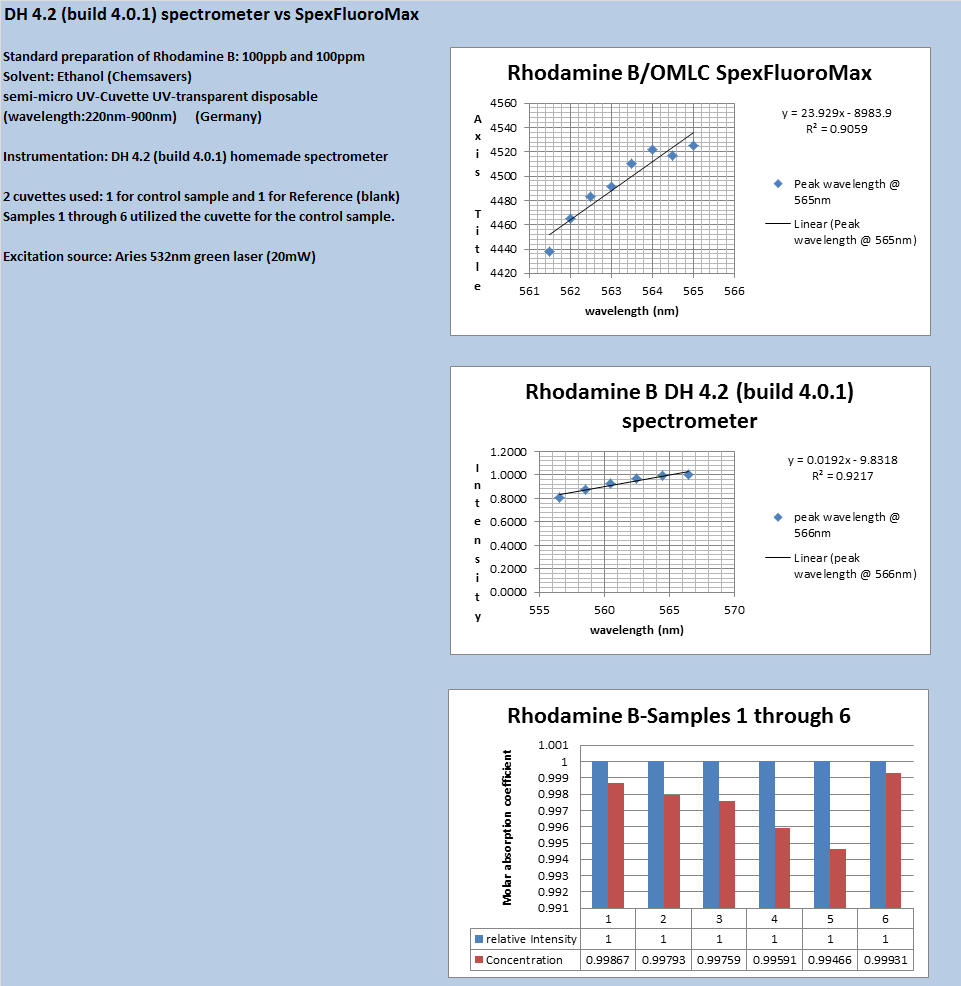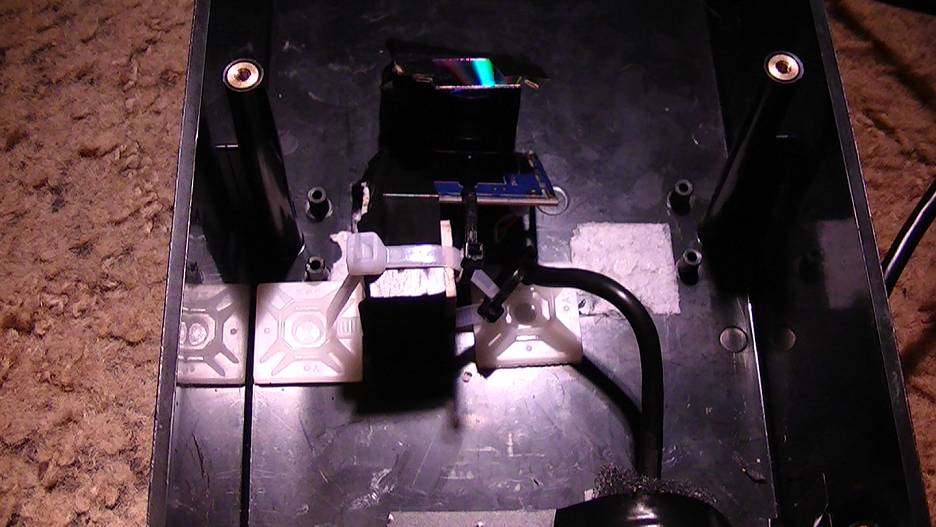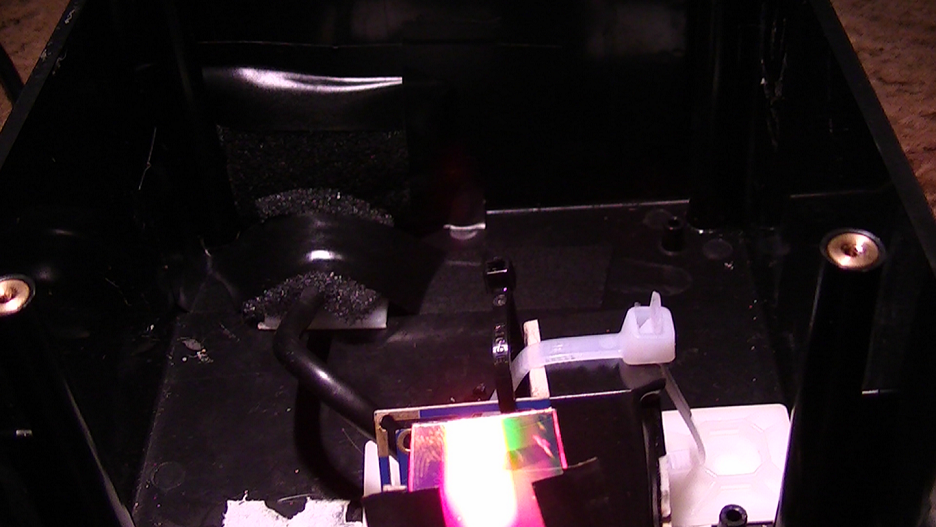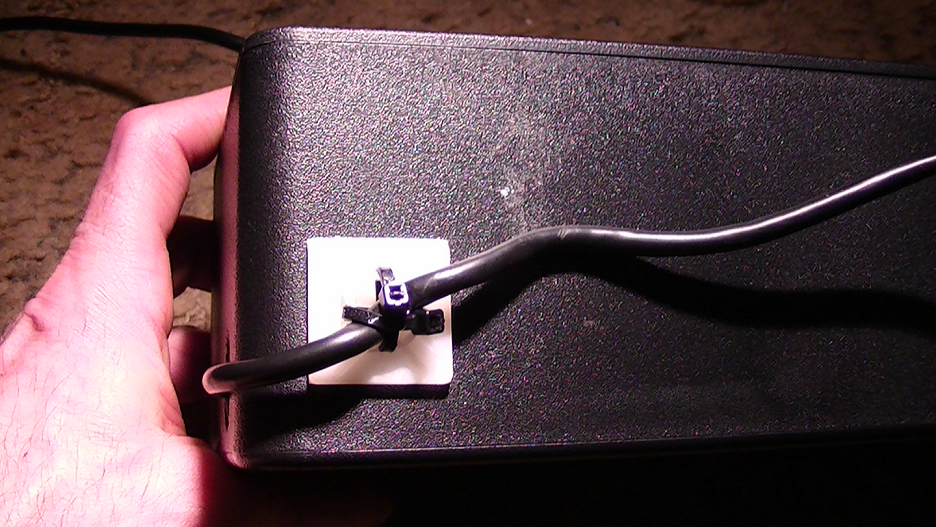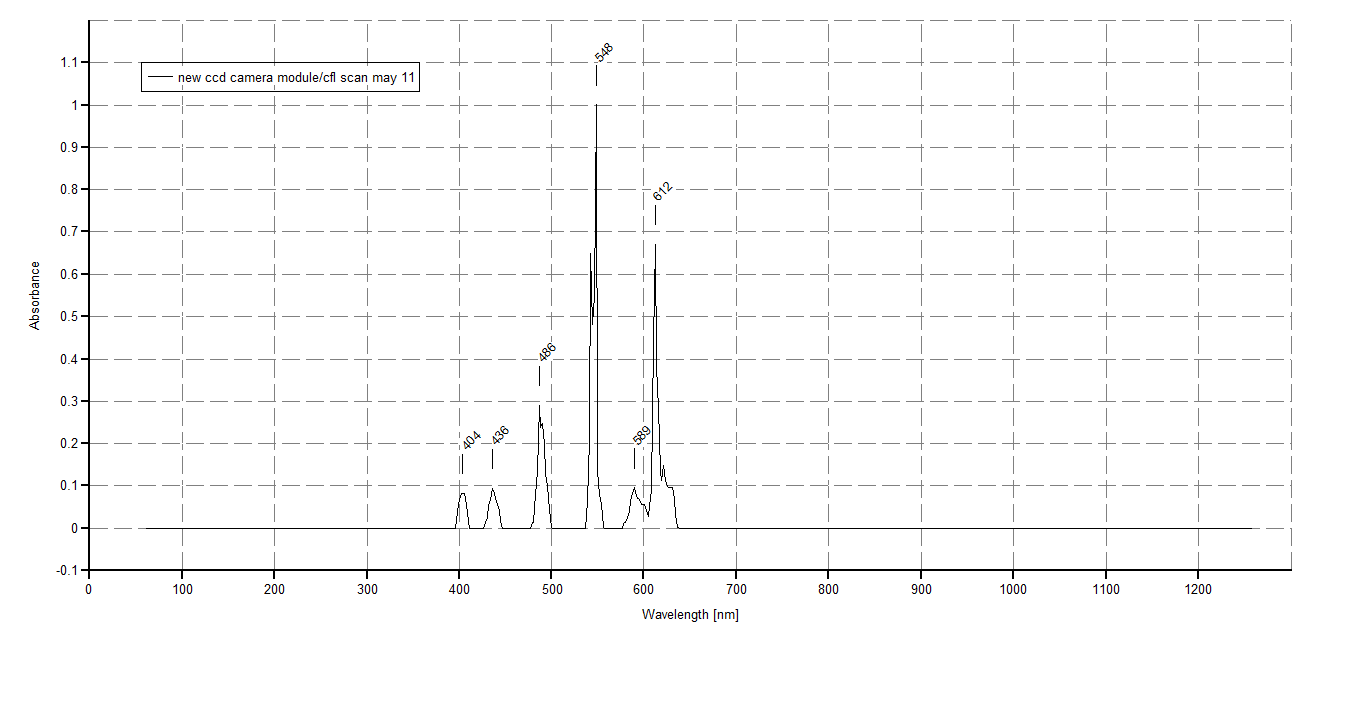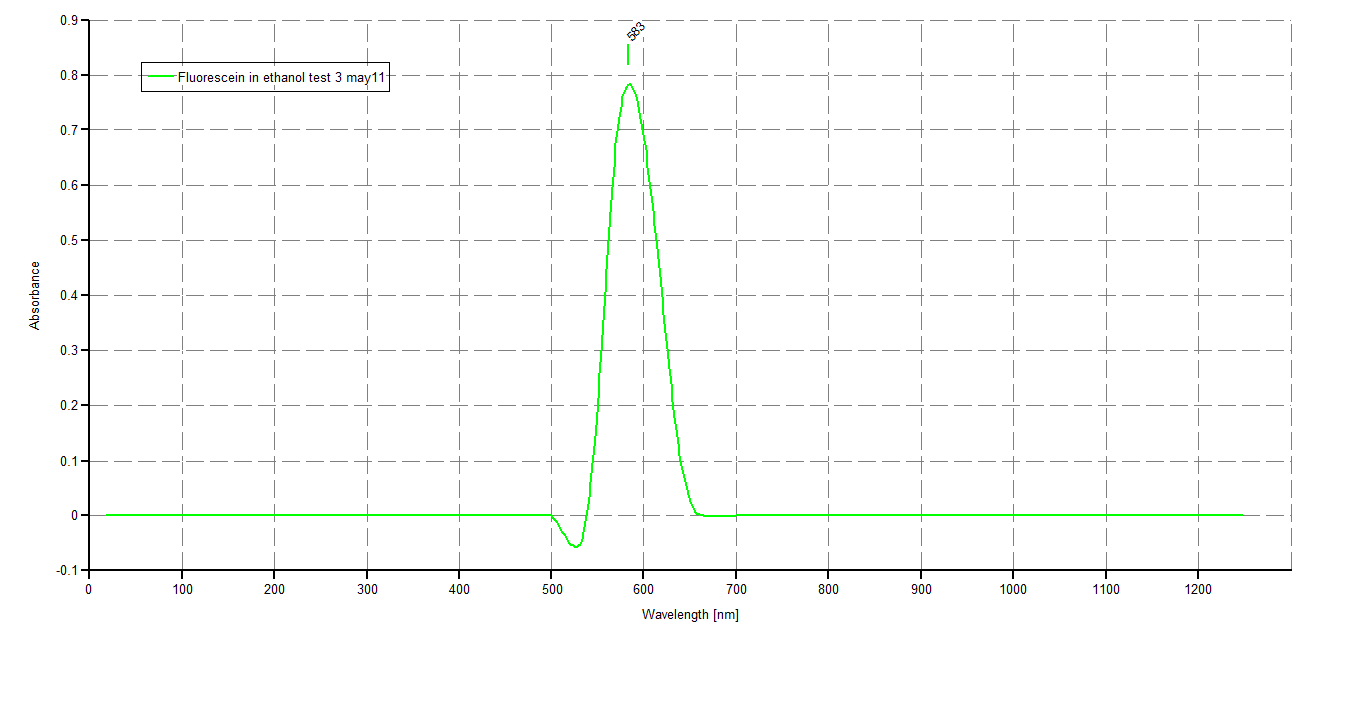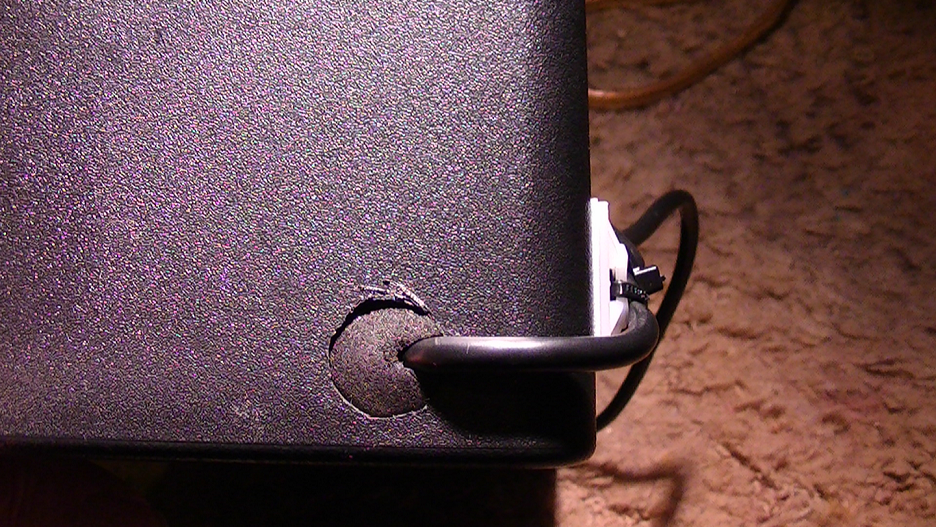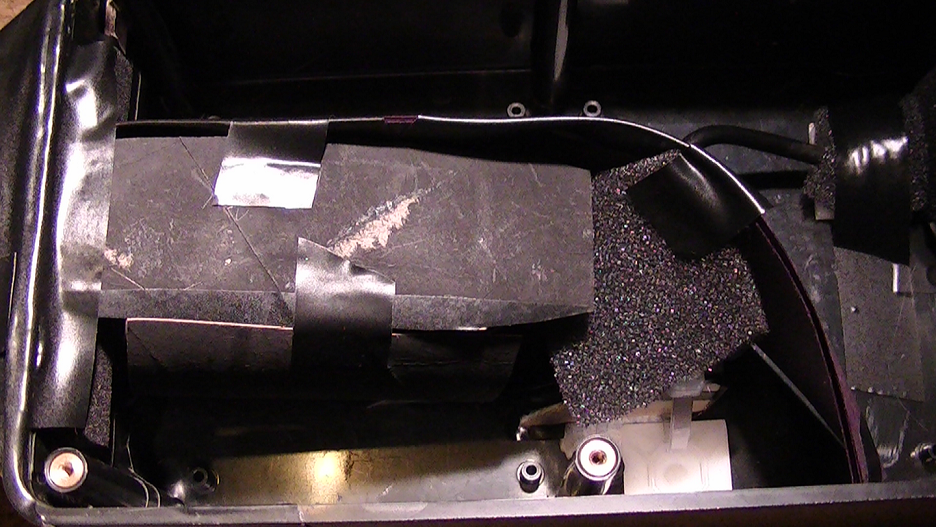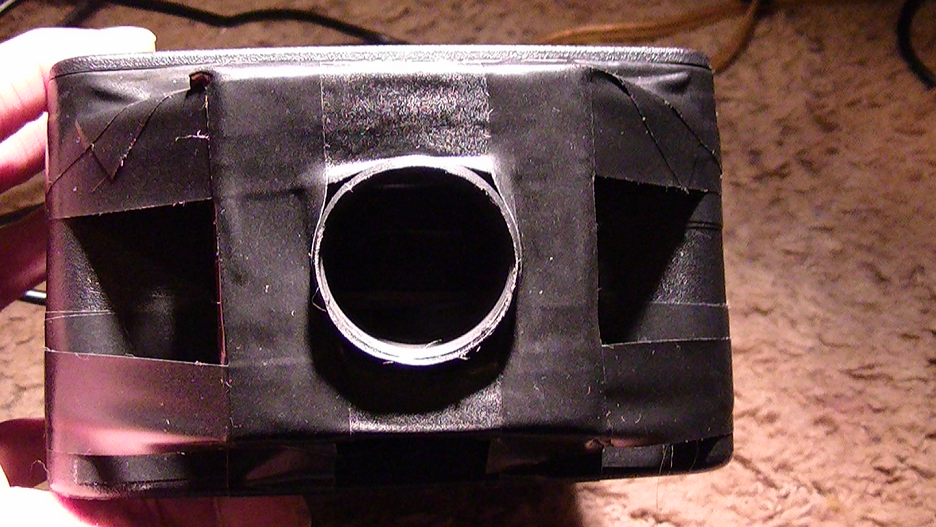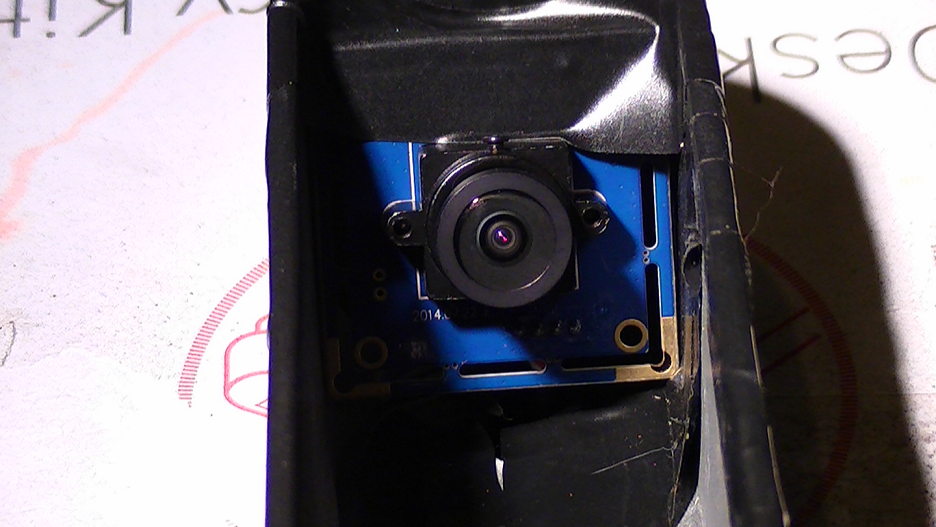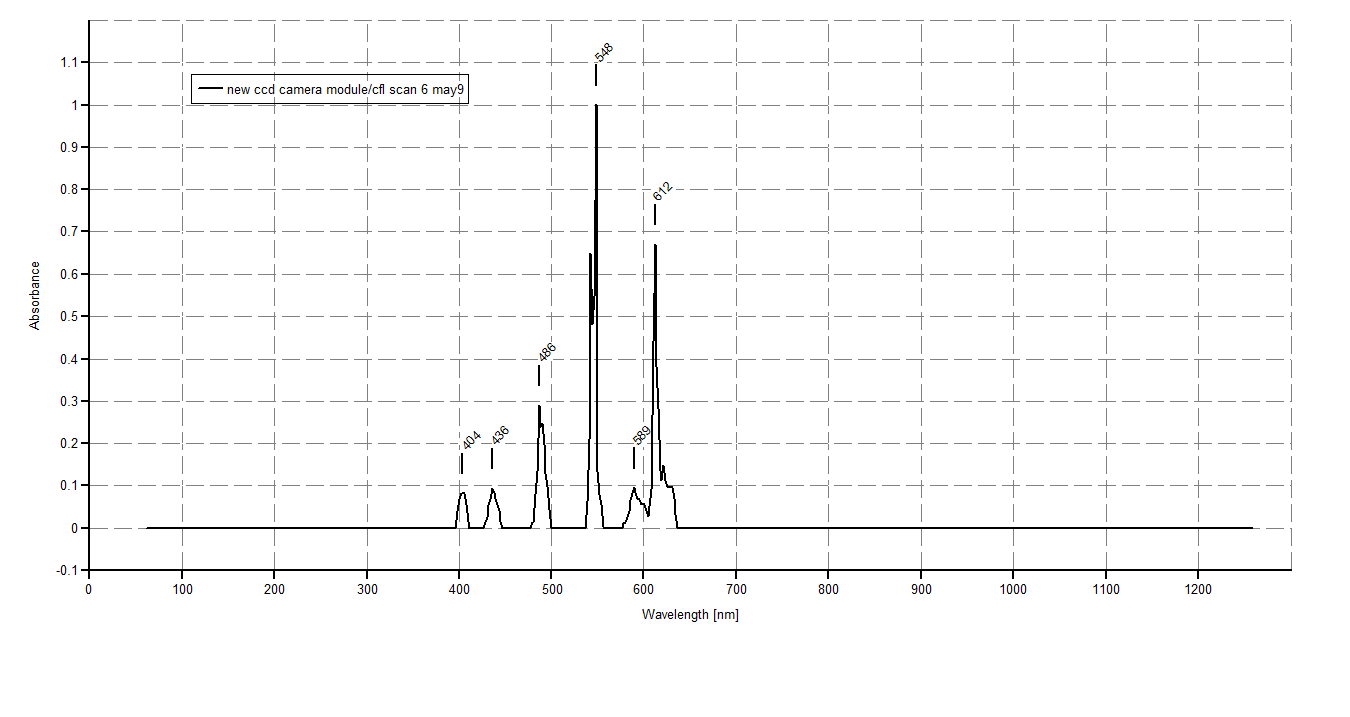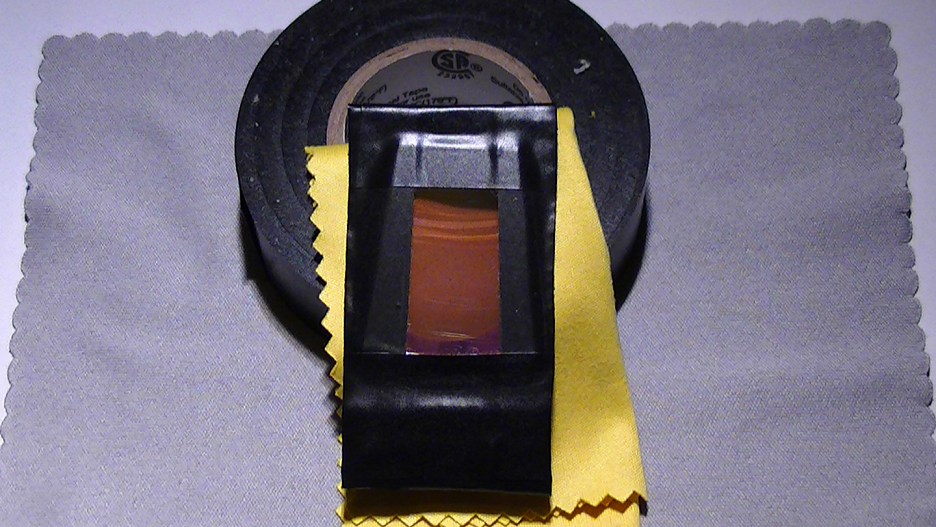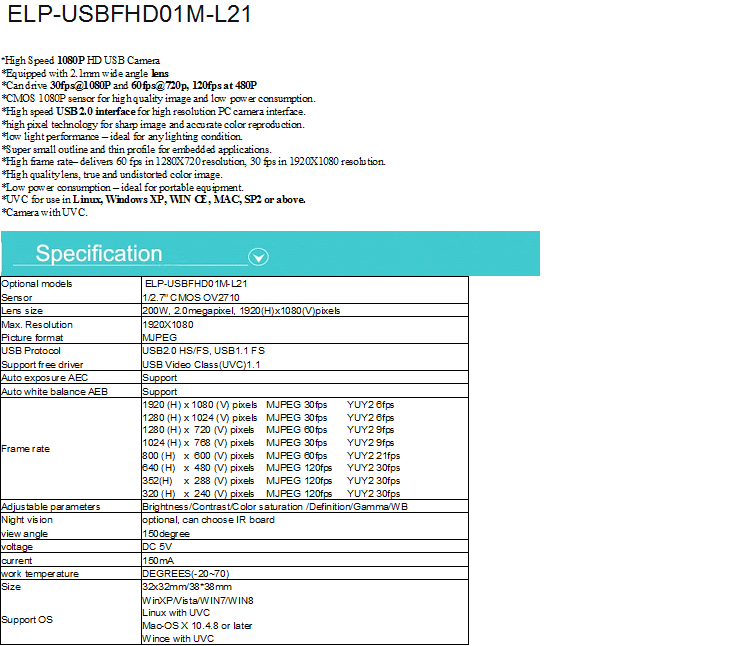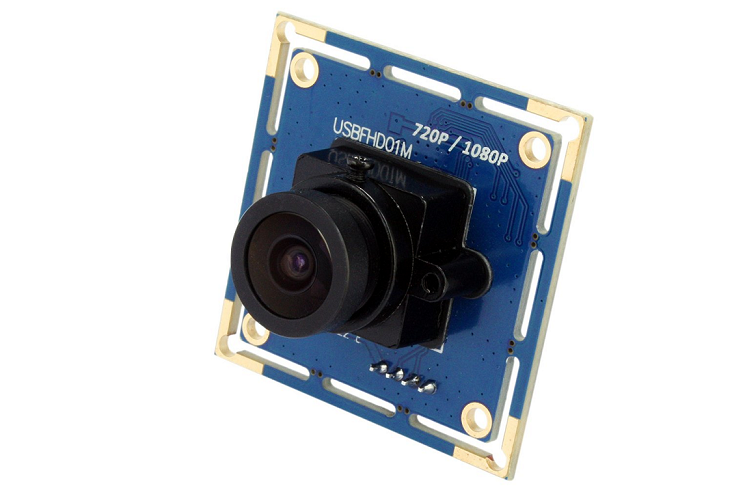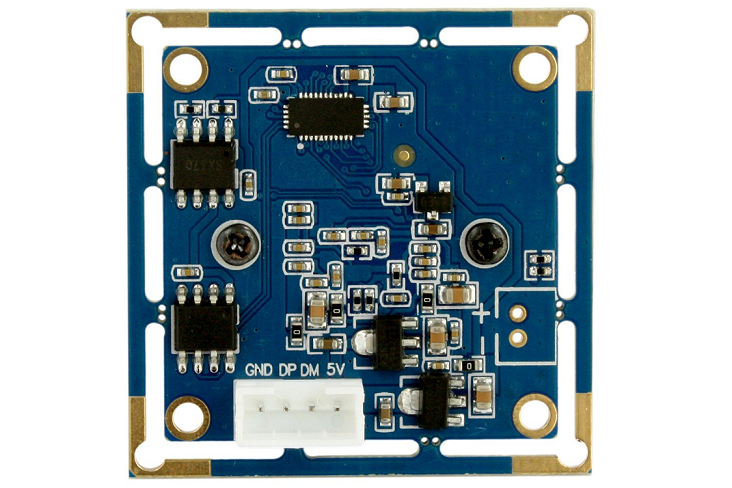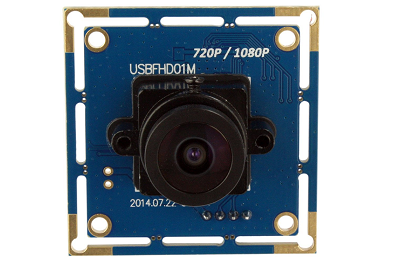-
A slight design change to the DH 4.2 Homemade spectrometer (build 4.0.1)
05/28/2016 at 18:11 • 0 commentsI had to make some design changes because of some stability issues I was having, like mis-alignment of the cuvette holder relative to the front coupler that houses the entrance slit.
Now there is only 1 cm from the face plate to the lip of the coupler for the cuvette holder to fit over, this seemed to make a remarkable improvement on the line of sight alignment form cuvette through slit to cmos camera eye on the emission spectra.
I also gave her some feet!
-
CFL (compact fluorescent light) Calibration
05/24/2016 at 12:34 • 0 commentsHere is a CFL calibration I did today using a polarizing filter:
![]()
![]()
-
New Cuvette Holder design done on SmartDraw/CAD
05/21/2016 at 23:10 • 0 commentsI redesigned the cuvette holder finally, this is just the prototype but she works great. It looks a little ruff I know, but this is just in the "proof of concept" mode. The cuvette holder is made from a high density, non-compressible black foam material.
The cuvette fits nicely in a collum cut at 12mm square @ 37mm in length down the holder's middle, so 3 sides are completely enveloped so light has no were else to go but back inside the cuvette and back out twoard the detector's slit.
Even though the cuvette's themselves are only 10cm path length, I cut the extra 2mm so it slides in and out easily.
![]()
![]()
![]()
![]()
-
First chemical analysis done using my homemade spectrometer
05/19/2016 at 22:04 • 0 comments -
Calibrating the ELP-USBFHD01M-L21 CMOS sensor
05/19/2016 at 09:59 • 0 commentsYesterday I had to take some time and re-calibrate my new CCD sensor, the easiest way to do this was using Fluorescein in two diferent types of buffer solutions and then comparing the results against a master reference, which is Fluorescein in Ethanol from the Oregon Medical Laser Center's data resource center.
![]()
![]()
-
New validation data for my homemade spectrometer
05/18/2016 at 15:58 • 0 commentsI spent the last 5 days analyzing a crude oil sample to further validate the DH 4.2 (build 4.0.1) spectrometer, and I have posted my research results at Public laboratory ( it would have been a little too much to post here,) so here is the link if you are interested.
Not too bad for the money!!
Thanks Dave H
-
Accuracy testing for the DH 4.2 homemade spectrometer
05/14/2016 at 21:36 • 0 commentsDH 4.2 (build 4.0.1) spectrometer vs SpexFluoroMax spectrometer!
ABSTRACT
Accuracy and calibration testing for the DH 4.2 (build 4.0.1) homemade spectrometer and comparison against the SpexFluoroMax Fluorimeter
This is the first real test for the new cmos sensor in my spectrometer, so I decided to test its accuracy on a rhodamine b standard. The preparation has been explained in previous research notes, ref: http://publiclab.org/notes/dhaffnersr/05-02-2016/rhodamine-b-in-ethanol-study-may-02-2016
I used as my reference spectrum the original data for rhodamine b in ethanol from the Oregon medical laser center because it is a “true” spectra done with a scanning fluorimeter. My goal was to match the peak emission wavelength of rhodamine b in ethanol using my 532nm green laser as the excitation source; I also wanted to match the quantum yield of rhodamine b in ethanol at room temp (22 deg C.)
I used 6 different concentration standards, characterized by the control standard of 100ppb, the sample cuvette was filled with the control sample and each scan thereafter was added I drop per scan, equaling 6 drops for the final sample. The idea behind this was to find the concentration that would yield the correct result, my conclusion based on the evidence was that sample number 1, with 1 drop of rhodamine b @ 100ppm was the correct concentration.
The weight conversion per drop is: 100ppb= 0.025g/25microlitres 100ppm=0.039g/39microlitres. So subtracting 0.39g from 0.025g yields a difference of 0.014g/14microlitres of 100ppm is needed in a solution od 100ppb of rhodamine b in ethanol to achieve these results.
Experimental setup:
Reference (blank) Ethanol
Control sample: Rhodamine B in ethanol/100ppb
Excitation wavelength: 532nm (Aries green laser/20mW
2 semi-micro UV-Cuvette UV-transparent disposable/ 3ml capacity
1 cuvette for control sample
1 cuvette for samples 1 through 6/samples characterized by 1 through 6 drops of Rhodamine B in ethanol @ 100ppm
Instrumentation: DH 4.2 (build 4.0.1) homemade spectrometer
Processing software: spekwin32 hardware control prototype/version 172.2P4
Slit width: 0.40mm
Detector bandwidth: 4
Purpose of experiment: accuracy testing for new CMOS module in spectrometer (first series)
![]()
![]()
-
Introducing the DH 4.2 spectrometer (prototype/build4.0.1)
05/11/2016 at 18:50 • 0 commentsAfter 3 months of severe trial and error, based upon the original design by Public lab version 2.5 spectrometer kit, I have finally constructed and tested my own version and design. I have kicked it, dropped it from 4 feet and she has stayed in alignment and operates normally. (NOT waterproof!)
With this particular build-4.0.1, I have ran over 500 spectral tests and analysis, I will be posting those results shortly but I wanted to post this because I am quite proud of my work here and I feel I have met 3.5 terms of my stated goal.
![]()
![]()
![]()
![]()
![]()
![]()
![]()
![]()
![]()
-
New upgrade today for my spectrometer/New CMOS camera module
05/09/2016 at 19:38 • 0 commentsI replaced the old webcam that came with the plab spectrometer kit today with a newer and far superior ccd camera module and ran a series of testing and she is working great!!
![]()
![]()
![]()
![]()
-
New CMOS camera module
05/09/2016 at 12:21 • 0 comments![]()
![]()
![]()
Installing a new ccd sensor today...
![]()
DAV 4 UV/VIS Spectrometer
Well, this is the next evolutionary step from when I first bought the Plab 2.5 spectrometer kit
 David H Haffner Sr
David H Haffner Sr